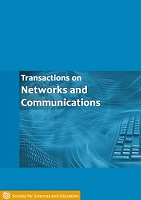Assessment of RCS-specific SNR and Loglikelihood Function in Detecting Low-observable Targets and Drones Illuminated by a Low Probability of Intercept Radar Operating in Littoral Regions
DOI:
https://doi.org/10.14738/tnc.94.10512Keywords:
Low-observable/Stealth Target, Radar Cross-section (RCS), Low Probability of Interception (LPI) Radar, Ultrawideband (UWB) Radar, Loglikelihood Function, Maximum Likelihood (ML) EstimationAbstract
The objective of this study is to deduce signal-to-noise ratio (SNR) based loglikelihood function involved in detecting low-observable targets (LoTs) including drones Illuminated by a low probability of intercept (LPI) radar operating in littoral regions. Detecting obscure targets and drones and tracking them in near-shore ambient require ascertaining signal-related track-scores determined as a function of radar cross section (RCS) of the target. The stochastic aspects of the RCS depend on non-kinetic features of radar echoes due to target-specific (geometry and material) characteristics; as well as, the associated radar signals signify randomly-implied, kinetic signatures inasmuch as, the spatial aspects of the targets fluctuate significantly as a result of random aspect-angle variations caused by self-maneuvering and/or by remote manipulations (as in drones). Hence, the resulting mean RCS value would decide the SNR and loglikelihood ratio (LR) of radar signals gathered from the echoes and relevant track-scores decide the performance capabilities of the radar. A specific study proposed here thereof refers to developing computationally- tractable algorithm(s) towards detecting and tracking hostile LoTs and/or drones flying at low altitudes over the sea (at a given range, R) in littoral regions by an LPI radar. Estimation of relevant detection-theoretic parameters and decide track-scores in terms of maximum likelihood (ML) estimates are presented and discussed.
Downloads
Published
How to Cite
Issue
Section
License
Copyright (c) 2021 Perambur Neelakanta, Dolores De Groff

This work is licensed under a Creative Commons Attribution 4.0 International License.






